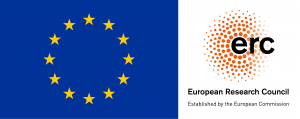Uncategorized
-
Book – J. Ponzo, S. Stano (eds.), I media e le icone culturali (Saggi di Lexia, 2024)
J. Ponzo, S. Stano (eds.), I media e le icone culturali, Rome, Aracne, 2024 (Saggi di Lexia #53). Download PDF The volume aims to take stock of the reflection on cultural icons, renewing it thanks to […]
-
NeMoSanctI’s series of meetings at Mufant: Altri Mondi, Altri Dei
NeMoSanctI organizes “Altri mondi, altri dei” [Other Words, Other Gods], a series of meetings dedicated to the theme of religion and spirituality in science fiction. The meetings, curated by Paolo […]
-
Articles – NeMoSanctI on “Sign Systems Studies”
A special issue of Sign Systems Studies dedicated to “Religion in the semiosphere“, edited by Thomas-Andreas Põder, Matthew L. Kalkman, has just been published. The number – Vol. 51 No. […]
-
Forma Sanctitatis – NeMoSanctI International Conference: the Program
NeMoSanctI International Conference “Forma Sanctitatis” is approaching. We are very pleased to present the complete program of the three days. The conference will be held from 6 to 8 September […]
-
Forma Sanctitatis – NeMoSanctI International Conference: The Speakers
We are very pleased to announce the speakers at the NeMoSantI International Conference “Forma Sanctitatis”. You can find their names in the poster, which we show you here for the […]
-
Article – J. Ponzo, Ideology, Transcendent Values and Flying Saints (Lexia, 2023)
Jenny Ponzo, Ideology, Transcendent Values and Flying Saints, Lexia 41-42 (2023), pp. 385–402. Download the complete issue here. Abstract. This essay starts with a theoretical reflection about ideology and the proposal of […]
-
At “Incontri sul senso 2023”
Next thursday, May 11, the 2023 edition of “Incontri sul senso” [Meetings on meaning”], the series of conferences organized at University of Turin by CIRCe, will host a double lecture […]
-
NeMoSanctI Workshop at the IRSL: “The role of exemplary characters in the interreligious translation of norms and religious practices”. Rome, May 24-25 2023.
Te workshop is organized by NeMoSanctI in the context of the 23rd International Roundtables for the Semiotics of Law – IRSL 2023: Global Semiotics and Everyday Legal Claims Intercultural Use […]
-
At “Senses and Meaning – Semiotic seminars 2022/2023”.
Our PI Jenny Ponzo will speak on Thursday 30 March at the Semiotics Seminars 2022-2023, this year dedicated to the theme “Senses and Meaning“. Each seminar is dedicated to one […]
-
At the conference “On the Theory of Verse” in Krakow
Our team member Magdalena Maria Kubas will be present on Thursday 30 March at the conference “Around the theory of verse”, which will be held in Krakow from 30 to […]
What is NeMoSanctI?

NeMoSanctI is a research project carried out at the University of Turin. It studies how models of sanctity have changed after the Second Vatican Council. To this end, it applies a pioneering methodology based on semiotic theory to a wide corpus of normative, judicial, and narrative texts.
This project has received funding from the European Research Council (ERC) under the European Union’s Horizon 2020 research and innovation programme (grant agreement No 757314).
Categories
- Book Presentation (3)
- Book Presentation (4)
- Call for Papers (3)
- Coronavirus (2)
- Events (126)
- Forma Sanctitatis (4)
- News (85)
- Press Review (14)
- Public engagement (38)
- Publications (61)
- Research (134)
- Semiotics of Religion (130)
- Uncategorized (16)
- Video (15)
- Website (6)
Recent Posts
- Chapter – Paolo Bertetti: “Biblioteche, reliquie e altre memorie di culture perdute. La conservazione del passato nella letteratura post-apocalittica”, in “Le biblioteche della fantascienza: utopie, distopie, intelligenze artificiali” (Milano, Editrice Bibliografica, 2024).
- Book – J. Ponzo, S. Stano (eds.), I media e le icone culturali (Saggi di Lexia, 2024)
- Third meeting of “Altri Mondi, Altri Dei” series at Mufant.
- At the NYU-Roma Tre Permanent Global Seminar “Religious Diversity in Italian Urban History”
- Warning: “Nuovi mondi, nuovi dei” on the newspaper “La Stampa”
